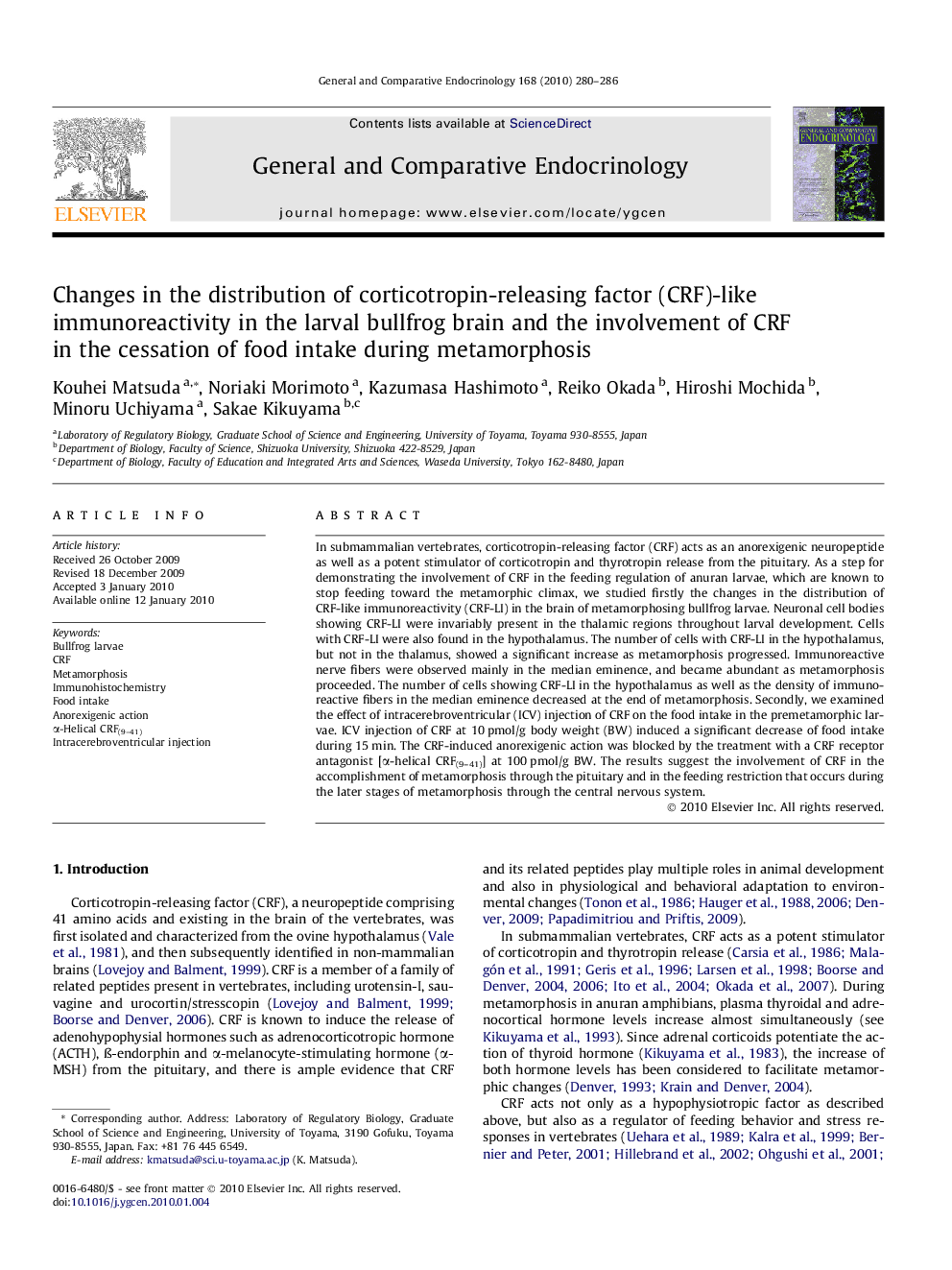| Article ID | Journal | Published Year | Pages | File Type |
|---|---|---|---|---|
| 2801170 | General and Comparative Endocrinology | 2010 | 7 Pages |
In submammalian vertebrates, corticotropin-releasing factor (CRF) acts as an anorexigenic neuropeptide as well as a potent stimulator of corticotropin and thyrotropin release from the pituitary. As a step for demonstrating the involvement of CRF in the feeding regulation of anuran larvae, which are known to stop feeding toward the metamorphic climax, we studied firstly the changes in the distribution of CRF-like immunoreactivity (CRF-LI) in the brain of metamorphosing bullfrog larvae. Neuronal cell bodies showing CRF-LI were invariably present in the thalamic regions throughout larval development. Cells with CRF-LI were also found in the hypothalamus. The number of cells with CRF-LI in the hypothalamus, but not in the thalamus, showed a significant increase as metamorphosis progressed. Immunoreactive nerve fibers were observed mainly in the median eminence, and became abundant as metamorphosis proceeded. The number of cells showing CRF-LI in the hypothalamus as well as the density of immunoreactive fibers in the median eminence decreased at the end of metamorphosis. Secondly, we examined the effect of intracerebroventricular (ICV) injection of CRF on the food intake in the premetamorphic larvae. ICV injection of CRF at 10 pmol/g body weight (BW) induced a significant decrease of food intake during 15 min. The CRF-induced anorexigenic action was blocked by the treatment with a CRF receptor antagonist [α-helical CRF(9–41)] at 100 pmol/g BW. The results suggest the involvement of CRF in the accomplishment of metamorphosis through the pituitary and in the feeding restriction that occurs during the later stages of metamorphosis through the central nervous system.
